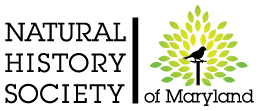So you’ve found a moth or a butterfly and were able to identify it to species. Congratulations! Could you go one step further and determine its sex? For many species of Lepidoptera, the males and females look alike, and the sex can only be determined via genitalic dissection or examination of the hindwing/forewing coupling. For some lepidopterans, size, antennae shape, and/or maculation (the arrangement and coloration of scales) may be useful for determining the sex of a live, wild specimen. For example, Imperial Moth males have yellow forewings and feathery antennae, whereas female forewings are brownish-pink (think “baked ham”) and the antennae are almost thread-like. Showcasing several examples from species found in Maryland, this presentation will focus on other lesser-known secondary sexual characteristics (SSCs) that can be observed in the field with a loupe or photographed with a macro lens.
About the presenter: Dave Webb is an editor with the Maryland Biodiversity Project, an online community of naturalists dedicated to cataloging the flora and fauna of Maryland. A birder for over 35 years, Dave shifted his focus about 10 years ago to include insects (especially moths and other nocturnal arthropods), terrestrial isopods, and the arthropods that exploit cattails.
This meeting of the NHSM Lepidoptery Club will take place online. Register today to receive the Zoom link and passcode via email. Please contact the club coordinator (mfalk@marylandnature.org) if you have any questions.
If you love butterflies and moths, consider joining the Lep Club. Made up of novice and expert lepidopterists who meet to exchange knowledge and support concerning habitat, threats, food sources, identification, and life cycle of butterflies and moths, the Lep Club encourages the sharing of knowledge for the raising and breeding of moths and butterflies through hands-on lessons and guest speakers. Club members are also involved in outreach in the greater Baltimore community through educational programs and service projects.
Annual NHSM membership is $35 for individuals, $50 for families; Lep Club membership is an additional $5 for individuals and $10 for families. Although you don’t need to be a member to attend our meetings, your membership dues support our programs and give you access to exclusive field trips and other events. Please email the club coordinator (mfalk@marylandnature.org) with questions.
To join, go here: https://www.marylandnature.org/get-involved/membership
To learn more about all NHSM Clubs, check us out on YouTube: https://www.youtube.com/watch?v=pIA7naRjXws&feature=youtu.be
Registration
Levels:- Lep Club Member: $0
-
NHSM Member: $5
Suggested Donation -
Education for All: $0
NHSM believes there should be no barriers to education. If you can’t pay, that’s okay. If you can pay, great. If you can pay more, please do, so this kind of education can continue.
Location
6908 Belair Road, Baltimore, 21206


